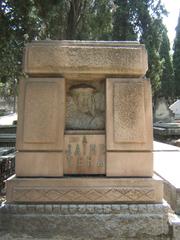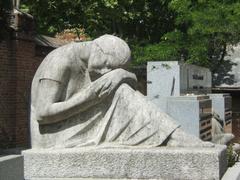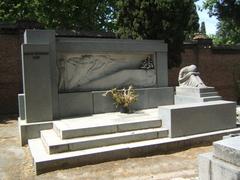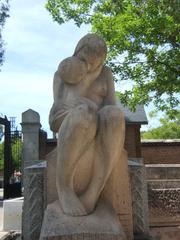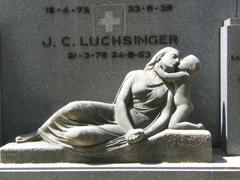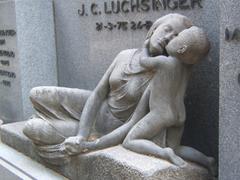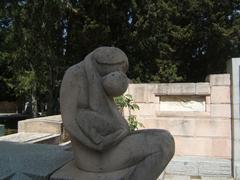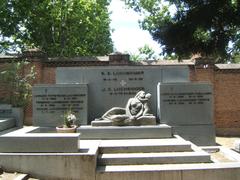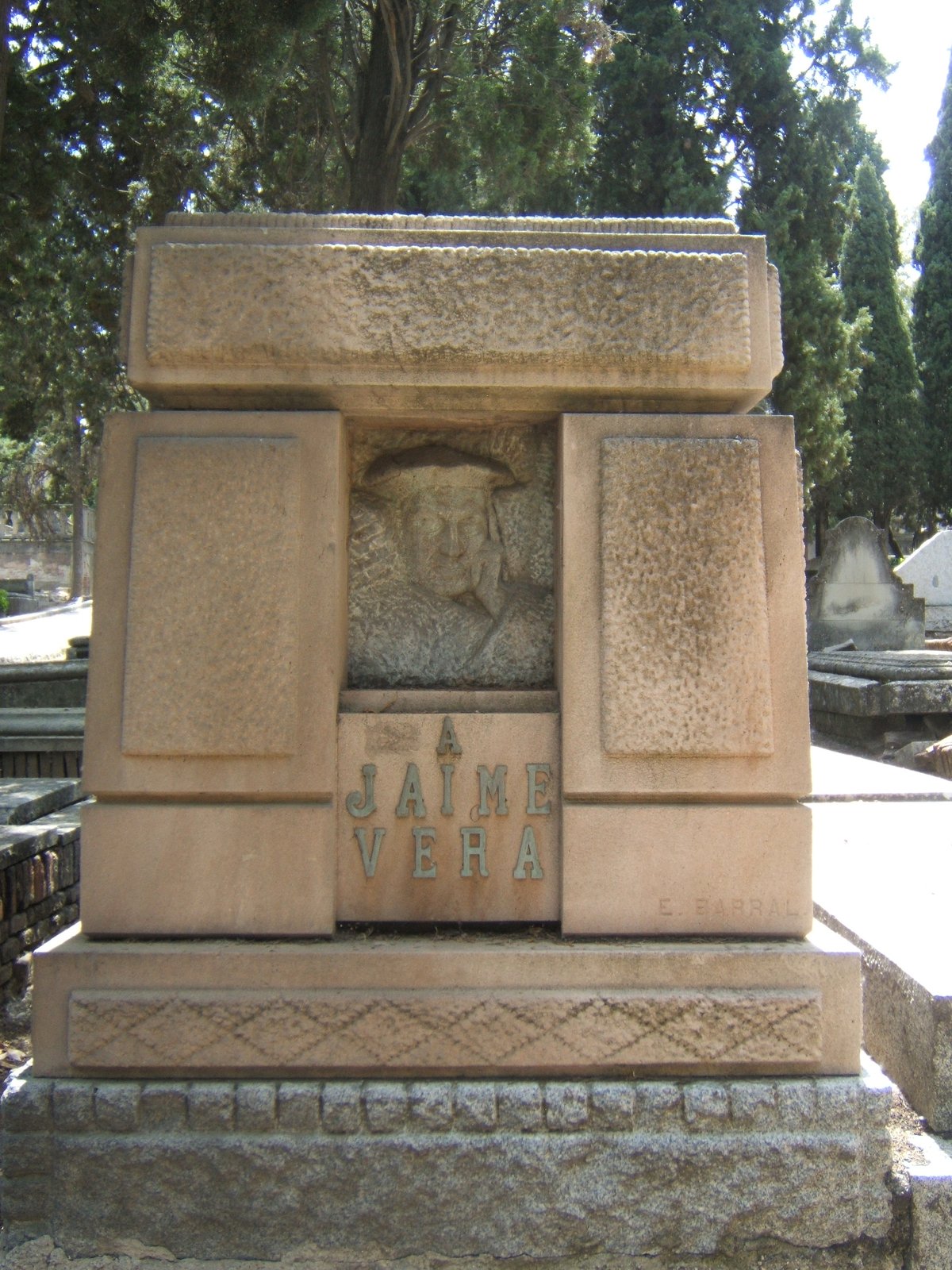
Civil Cemetery Madrid: Visiting Hours, Tickets, and Historical Significance
Date: 14/06/2025
Introduction
The Civil Cemetery of Madrid (Cementerio Civil de Madrid) stands as an enduring symbol of Spain’s journey toward secularism, pluralism, and modern social values. Established in the late 19th century, this cemetery was conceived to provide dignified burial to those excluded from Catholic consecrated ground—non-Catholics, atheists, suicides, and political dissidents. Its foundation reflects the liberal reforms and societal shifts that shaped Madrid and Spain as a whole. Today, the Civil Cemetery is not just a burial ground but a significant cultural and historical landmark, inviting visitors to explore the city’s evolving identity through art, architecture, and the legacies of those interred within its walls.
Table of Contents
- Introduction
- Historical Background and Foundation
- Architectural Features and Layout
- Notable Burials and Memorials
- The Civil Cemetery in the Context of Spanish History
- Visiting Information: Hours, Tickets, Accessibility
- Guided Tours and Visitor Experience
- Travel Tips and Nearby Attractions
- Visitor Etiquette and Cultural Traditions
- Frequently Asked Questions
- Conclusion
- Sources and Official Links
Historical Background and Foundation
Origins in Secular Reform
The origin of the Civil Cemetery dates to 1884, a period of significant social change. As Spain moved toward greater religious tolerance and secular governance, the need for a non-denominational burial site became apparent. The 1859 Ley de Cementerios Civiles and the Real Orden of 1883 mandated municipalities to provide spaces for non-Catholic burials. The cemetery’s first burial—Maravilla Leal González, a young suicide victim—exemplified its inclusive mission and the break from exclusive Catholic practices (Wikipedia - Cementerio Civil de Madrid).
Enlightenment Influence and Urban Reform
Madrid’s broader necropolis, including the Civil Cemetery, traces its roots to Enlightenment-era reforms under Charles III and later influences from the Napoleonic occupation. A key goal was to move cemeteries outside city limits, improving urban hygiene and supporting the city’s modernization (Fascinating Spain).
Architectural Features and Layout
The Civil Cemetery is located in Madrid’s Carabanchel district, adjacent to Almudena and the Jewish Cemetery. It features eclectic architecture—neomudéjar and neo-Gothic elements in its porticos and mausoleums—reflecting the city’s cultural diversity. The grounds are divided into sections honoring various communities and individuals, with an emphasis on simplicity and egalitarian values over religious grandeur (Madrid Tourist Guide).
Notable Burials and Memorials
The cemetery is the final resting place of many prominent figures:
- Dolores Ibárruri (“La Pasionaria”): Iconic communist leader and anti-fascist symbol.
- Francisco Pi y Margall: President of the First Spanish Republic.
- Pío Baroja: Influential novelist, Generation of ’98.
- Pablo Iglesias Posse: Founder of PSOE and UGT, key figure in Spanish socialism.
- Enrique Tierno Galván: Philosopher and beloved mayor during Spain’s democratic transition.
- Julián Zugazagoitia: Last Republican Minister of the Interior, executed under Franco.
- The Thirteen Roses: Young women executed for their Republican affiliations after the Civil War.
- Members of the Condor Legion: German airmen from the Spanish Civil War (Springer Link).
Memorials and plaques throughout the cemetery commemorate these individuals and broader struggles for freedom, democracy, and justice.
The Civil Cemetery in the Context of Spanish History
Site of Memory and Civil War
During and after the Spanish Civil War (1936–1939), the cemetery became a site of executions and burials for victims of political repression. Its proximity to Almudena Cemetery, where mass executions took place, imbues the site with a powerful memorial character and makes it a focal point for remembrance and public ritual (Memoria y Libertad).
Cultural Pluralism
The cemetery’s existence and the presence of Jewish, Protestant, and other minority sections underscore Madrid’s evolving pluralism. All Saints’ Day on November 1 sees families from diverse backgrounds gather to honor their ancestors, highlighting the cemetery’s role as a symbol of inclusion and respect for diversity (esmadrid.com).
Visiting Information: Hours, Tickets, Accessibility
Location and Access
- Address: Avenida de Daroca, 90, 28017 Madrid, adjacent to Almudena Cemetery.
- Public Transport: Metro Line 2 (La Elipa station), multiple bus lines.
- Parking: Limited street parking available.
Visiting Hours
- Summer (April–September): 8:00 AM – 7:30 PM
- Winter (October–March): 8:00 AM – 6:30 PM
- Special Events: Hours may extend during All Saints’ Day and other commemorations. Always check the official site or local tourist information for updates.
Tickets and Entry
- Admission: Free for self-guided visits. No tickets required.
- Guided Tours: Usually require advance booking and a fee. Conducted in Spanish, with English options on request.
Accessibility
- Wheelchair Access: Most main paths are accessible, though some areas may have uneven surfaces.
- Facilities: Restrooms near the entrance; no cafés or shops on site—bring water, especially in summer.
Guided Tours and Visitor Experience
Guided tours are available via the Asociación Cultural Funerarte (contact: [email protected]). These expert-led tours delve into the cemetery’s history, art, and symbolism, and offer valuable context for understanding its role in Spanish society (Official Madrid Municipal Cemetery Page).
Travel Tips and Nearby Attractions
- Combine Visits: Explore adjacent cemeteries like Almudena and Saint Justo for a comprehensive view of Madrid’s necropolis.
- Nearby Sites: Almudena Cathedral, Royal Palace, Retiro Park, and the creative Carabanchel neighborhood are within reach.
- What to Bring: Comfortable shoes, sun protection, and a map or guidebook.
Visitor Etiquette and Cultural Traditions
- Conduct: Speak quietly, avoid loud conversations, and do not disturb mourners or ongoing services.
- Dress: Modest attire is recommended, especially during memorial days.
- Photography: Permitted for personal use; avoid photographing mourners or ceremonies.
- Litter: Take all personal items and trash with you.
All Saints’ Day
On November 1, families honor ancestors and decorate graves with flowers. The cemetery becomes a space for both solemnity and community gathering—respect the emotional significance of this day.
Frequently Asked Questions
Q: What are the Civil Cemetery Madrid visiting hours?
A: Generally, 8:00 AM–7:30 PM in summer, 8:00 AM–6:30 PM in winter. Check the official site for updates.
Q: Is there an entry fee?
A: No, entry is free for self-guided visits.
Q: Are guided tours available?
A: Yes, contact Asociación Cultural Funerarte or check local event calendars for availability.
Q: Is the cemetery accessible for those with mobility issues?
A: Most main paths are accessible, but some older areas are uneven.
Q: Can I take photographs?
A: Yes, for personal use. Avoid photographing funerals or mourners.
Conclusion
The Civil Cemetery of Madrid is more than a burial ground; it is a living archive of Spain’s journey toward secularism, democratic values, and cultural pluralism. It offers visitors a unique opportunity to connect with the city’s history, honor the memory of its most influential figures, and reflect on the enduring struggles for inclusion and justice. With free admission, accessible grounds, and enriching guided tours, the Civil Cemetery stands out as a must-visit site for anyone interested in Madrid’s heritage.
Plan your visit today, and consider using the Audiala app for audio guides and maps to enhance your experience. Stay informed by following official resources and engaging with Madrid’s historical fabric through this remarkable site.
Sources and Official Links for Further Reading
- Official Madrid Municipal Cemetery Page
- Almudena Cemetery Official Website
- History of Cementerio Civil de Madrid - Wikipedia
- Fascinating Spain - Almudena and Civil Cemetery Context
- Madrid Tourist Guide
- Springer Link on Spanish Civil War Memory
- Memoria y Libertad
